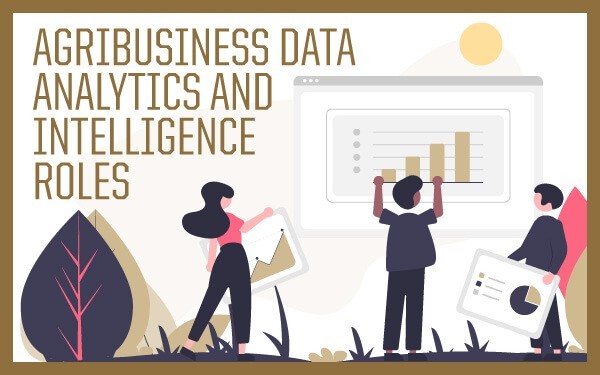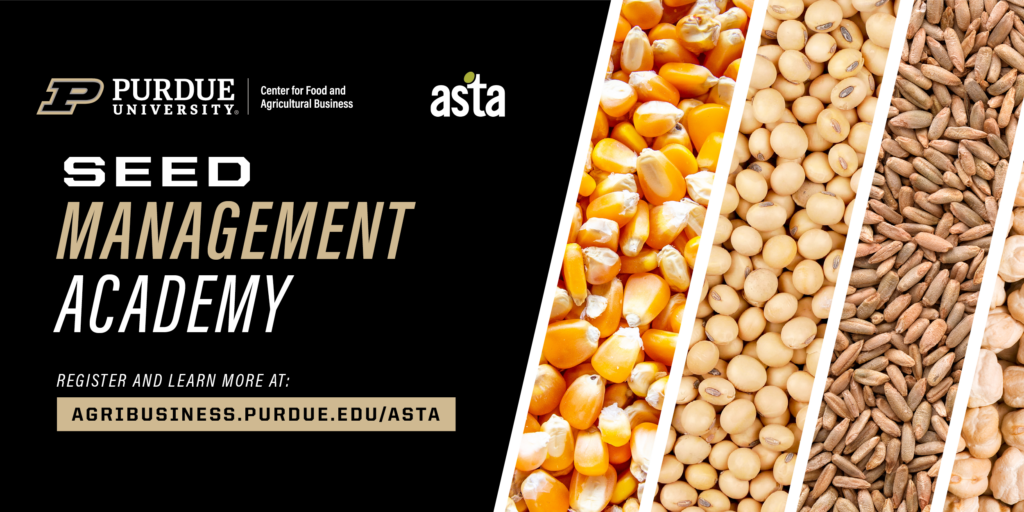Author: Dr. Lourival Carmo Monaco Neto, Postdoctoral Research Associate
It was clear before and even more so now after the events of the last 12+ months — data-driven decision making is crucial for companies aiming to remain profitable and competitive in today’s markets. However, beyond simply basing decision making on data, companies must take this a step further and fully embrace the concept of competitive intelligence to truly be successful. In the food and agribusiness industry, we are no exception to this rule.
Competitive intelligence is centered around the idea that the right data collected at the right time can be analyzed in the best form, communicated optimally, and acted upon to produce competitive advantage. In order to achieve competitive advantage (especially considering the impact and relevance of Big Data, embedded analytics, the Internet of Things, machine learning and many other data and computational-related aspects in modern agriculture), a new set of competencies are needed to fully leverage the data assets being generated on farms.
To fulfill this need, a demand for analytically capable workers is being created in the agribusiness sector, but these new professionals will not solely be able to solve all of the puzzles and produce all of the answers necessary for agribusiness companies moving forward. Instead, these professionals will need to operate in an environment where their competencies can complement other more traditional aspects of data analysis such as agronomical knowledge in a synergistic way. For this new horizontal and network-driven structure to fully function, the environment must be computational yet user-friendly.
Finally, a data-driven culture — or even better, an intelligence-driven culture — needs to be fostered in agribusiness companies; however, it must be implemented thoughtfully. For example, in the same way “greenwashing” is a problem for companies pursuing sustainability, “datawashing” a company can create similar issues. Data should be the fuel for better business performance instead of an obstacle in its way.
As a result of this knowledge, a proposed generic work structure or organizational chart for agribusiness companies seeking to be more efficient in using data as the source of their competitive advantage can be found below:

The roles represented in this chart are not necessarily performed by a single person. Rather, they can be performed by a team or, perhaps, more than one role can fall under an individual’s responsibilities. Each role has specific responsibilities, and the important takeaways here are the functions that needs to be fulfilled by each:
- Chief Analytics Officer (CAO) or Chief Intelligence Officer (CIO): While a c-suit level professional is being used for this example, this role can also be at a managerial or supervisory level. This role is responsible for connecting the decision makers to the analytical and intelligence team. Usually, the intelligence team’s power to do things is derived from these sponsoring positions in the company. Additionally, this role is the focal point for intelligence and data demands as this person manages the analytical team and demands not only technical skills in analysis, agronomy and IT, but also manages people and connects them to the rest of the company.
- Data Scientist: This is a key role in the contemporary analytical team in an agribusiness firm as this person/team is responsible for data acquisition (putting data in the best form possible), data cleaning, organization and analysis. The analysis can range from simple excel tables and graphs to very complex statistical modeling and computational simulation, utilizing software such as R, STATA, SAS, Tableau and more. This role makes the first important data transformation — transforming data into information.
- Technical/Agronomical Specialist: This professional/team is responsible for building the bridge between the cold information from numbers analyzed by the data scientists and the real agricultural world. Of course, this role demands some knowledge of data analytics due to the necessity of communicating with data scientists, but this professional is not in charge of the analysis. Rather, they check the data and use their technical knowledge to draw insights around what the results will imply for their business or their customer’s business. There is a great synergy possible here when the agronomist and data scientist can speak the same language. This role is responsible for creating the reports that will be used by the decision makers. Here, the second data transformation is made — transforming information into knowledge.
- IT Specialist: As databases get larger, analytical tools get more sophisticated and the speed/automation of data gathering increases, the necessity for a data management ecosystem becomes more crucial. This role is responsible for providing the stage in which data scientists will be able to develop their function to the best of their abilities and where agronomists will create their reports. This professional/team will also be fundamental in the data collection and organization steps of the intelligence effort. It is possible that in the future, people will be more versed in technology and will not need as much support when working with data and data-based reports, but for the time being, helping people navigate this area is an essential part of this professional/team’s role.
- Collaboration Network: This role is intended for any other individual in the company willing to help with the analytics/intelligence team. More often than not, this role involves providers of primary information collected straight from customers, partners, competitors, etc. This type of information is difficult to find in any other way and extremely valuable. The company’s culture plays a major role here as the collaborators must be data/intelligence-driven in order to understand the importance of collecting information in the field or their daily work and providing it to the analysis team. Normally, the results of this information for analytical efforts are great and help the entire company; however, they are indirect, which reinforces the necessity of a cultural focus on data in the company.
As you can see, this organizational structure is very horizontal and network-driven. The idea behind this structure is that each role has specific knowledge, and the result of their work as a team is greater than the sum of its parts. A data scientist will learn some agronomy skills as he/she works with an agronomist and vice-versa. The learning curve is exponential and will create more sophisticated and precise analysis as the team gets more acquainted with each other’s areas.
Analytics and its resulting intelligence will drive the success of agribusiness companies across the entire chain moving forward. Having the right set of capabilities to leverage data resources that will be created is key to achieving competitive advantage in this space.
:




